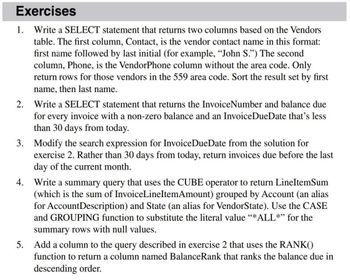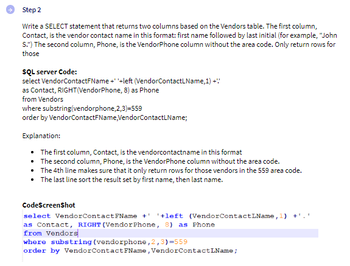5. Add a column to the query described in exercise 2 that uses the RANK() function to return a column named BalanceRank that ranks the balance due in descending order.
SQL
SQL stands for Structured Query Language, is a form of communication that uses queries structured in a specific format to store, manage & retrieve data from a relational database.
Queries
A query is a type of computer programming language that is used to retrieve data from a database. Databases are useful in a variety of ways. They enable the retrieval of records or parts of records, as well as the performance of various calculations prior to displaying the results. A search query is one type of query that many people perform several times per day. A search query is executed every time you use a search engine to find something. When you press the Enter key, the keywords are sent to the search engine, where they are processed by an algorithm that retrieves related results from the search index. Your query's results are displayed on a search engine results page, or SER.
SQL server
Answer question 5


Trending now
This is a popular solution!
Step by step
Solved in 2 steps with 1 images

SQL Server
Please help answer question 5
Please type out the answer because I cannot read the last answer because the handwriting is not very clear. Thank you.










